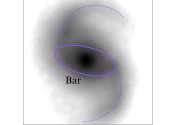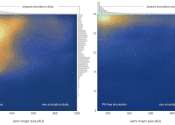An abundance of distant gas-rich galaxies found by FAST
Astronomers, using the Five-hundred-meter Aperture Spherical radio Telescope (FAST) in China's Guizhou Province, have found an abundance of gas-rich galaxies in the distant universe.

Astronomers, using the Five-hundred-meter Aperture Spherical radio Telescope (FAST) in China's Guizhou Province, have found an abundance of gas-rich galaxies in the distant universe.
Astronomy
May 10, 2024
0
8

In images from NASA's retired Spitzer Space Telescope, streams of dust thousands of light-years long flow toward the supermassive black hole at the heart of the Andromeda galaxy. It turns out these streams can help explain ...
Astronomy
May 9, 2024
0
67

Using data from ESA's Gaia satellite, astronomers from Turkey and India have investigated NGC 188—an old open cluster in the Milky Way. Results of the study, published April 19 on the pre-print server arXiv, deliver important ...

If you peer up at the constellation Corona Borealis—the Northern Crown—over the next several months, you may catch a glimpse: Astronomers predict that sometime this year, a new star will appear in the night sky, growing ...
Astronomy
Apr 29, 2024
0
71

The Milky Way has a missing pulsar problem in its core. Astronomers have tried to explain this for years. One of the more interesting ideas comes from a team of astronomers in Europe and invokes dark matter, neutron stars, ...
Astronomy
Apr 29, 2024
2
161

The magnificent central bar of NGC 2217 (also known as AM 0619-271) shines bright in the constellation of Canis Major (The Greater Dog), in this image taken by the NASA/ESA Hubble Space Telescope. Roughly 65 million light-years ...
Astronomy
Apr 29, 2024
0
24

The universe's early galaxies were less chaotic and developed much faster than previously thought, according to new research looking back more than ten billion years in time. An international team of astronomers led by Durham ...
Astronomy
Apr 23, 2024
0
78

Thanks to new sophisticated techniques and state-of-the-art facilities, astronomy has entered a new era in which the depth of the sky can finally be accessed. The ingredients of our cosmic home, the Milky Way galaxy—stars, ...
Astronomy
Apr 23, 2024
0
107

A small team of planetary scientists from the California Institute of Technology, Université Côte d'Azur and Southwest Research Institute reports possible new evidence of Planet 9. They have published their paper on the ...

This image from the NASA/ESA Hubble Space Telescope features NGC 3783, a bright barred spiral galaxy about 130 million light-years from Earth that also lends its name to the eponymous NGC 3783 galaxy group.
Astronomy
Apr 22, 2024
0
66